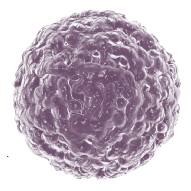Editorial: Limitations of Virus Culture
For decades, virus cultures have been the gold standard for virus detection despite their long turnaround times and lack of sensitivity. Polymerase Chain Reaction (PCR) tests have become the new gold standard for several viral agents because PCR tests are (a) more sensitive, (b) detect even the unculturable viral strains, and (c) provide results within a clinically relevant timeframe. For these reasons, we do not recommend virus culture for detecting cytomegalovirus (CMV), enteroviruses, noroviruses, rhinoviruses, respiratory syncytial virus (RSV) and varicella-zoster virus (VZV).
Cytomegalovirus
CMV grows slowly in cell culture and positive results are not available for 8-21 days after inoculation. Dual infections are relatively common in deep respiratory specimens and faster growing viruses will often destroy the culture before CMV can be detected resulting in false negative culture results. PCR results are available in 1-2 days and detection is not affected by the presence of other viruses.
Enteroviruses
There are more than 60 different enteroviruses and multiple serotypes circulate concurrently. Many enteroviruses are difficult or impossible to grow in culture. Positive enterovirus cultures are usually reported 3-8 days after inoculation; negative results are not available for 10-14 days. PCR results are available in 1-2 days and PCR methods can detect all enterovirus types.
Noroviruses
Noroviruses are the most common cause of sporadic gastroenteritis and gastroenteritis outbreaks in the United States (1). Noroviruses cannot be grown in culture. PCR methods take 1-2 days. Antigen detection is very insensitive.
Rhinoviruses
There are more than 200 different rhinoviruses and multiple serotypes circulate simultaneously. Virus isolation has been the primary means for detecting rhinovirus infections but culture is very insensitive and culture does not detect all strains. PCR is the preferred method for detecting rhinovirus infections (2).
Respiratory Syncytial Virus
RSV is the major cause of bronchiolitis and pneumonia in children under 5 years of age (3). Virus cytopathology is usually detectable 5-8 days after inoculation and the sensitivity of virus culture ranges from 57-90% depending upon the virus subtype (3). PCR testing is reported to be 2.6 fold more sensitive than culture3 and test results are available in 1-2 days.
Varicella-Zoster Virus
Varicella-zoster virus causes chickenpox and shingles. VZV grows slowly in culture and viral cytopathology is usually detected 7-10 days after inoculation. “Rapid” shell vial cultures can detect VZV in 3-5 days. PCR is more sensitive than culture (4) and results are available 1-2 days after specimen submission.
Literature Cited
- American Academy of Pediatrics. Human Calicivirus Infections (Norovirus and Sapovirus). In: Pickering, LK, Baker CJ, Kimberlin DW, Long SS. Red Book: 2012 report of the Committee on Infectious Diseases. Elk Grove Villiage, IL. American Academy of Pediatrics, 2012:261.
- American Academy of Pediatrics. Rhinovirus Infections. In: Pickering, LK, Baker CJ, Kimberlin DW, Long SS. Red Book: 2012 report of the Committee on Infectious Diseases. Elk Grove Villiage, IL. American Academy of Pediatrics, 2012:619.
- Robinson CC. Respiratory Viruses. In: Specter S, Hodinka RL, Young SA, Wiedbrauk DL. Clinical Virology Manual, Fourth Edition. ASM Press, Washington DC. 2009;203-248.
- Stránská R, Schuurman R, de Vos M, van Loon AM. Routine use of a highly automated and internally controlled real time PCR assay for the diagnosis of herpes simplex and varicella-zoster virus infections. J. Clin Virol. 2004;30(1):39-44.

